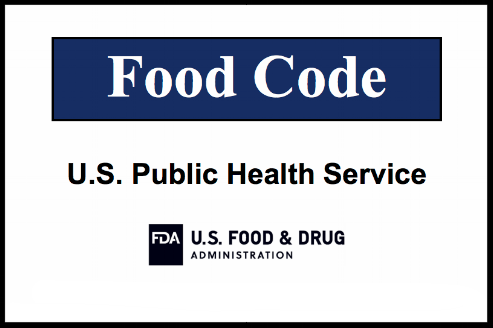 The U.S. Food & Drug Administration (FDA) recently released an updated Food Code 2017. This document is definitely not a quick read, but there are a few items worth noting about disposable gloves for food handling.
The U.S. Food & Drug Administration (FDA) recently released an updated Food Code 2017. This document is definitely not a quick read, but there are a few items worth noting about disposable gloves for food handling.
Most notably, a section about Inspection Reports notes a list of monitored supervisory duties needed to reduce risk factors.
“Gloves used properly: The observation of food preparation activities and glove-use by food employees is necessary. There should be a discussion with the PIC* on how gloves are used, if applicable, in food preparation activities. Gloves may serve as a source of cross-contamination if misused.”
"GLOVES MAY SERVE AS A SOURCE OF CROSS-CONTAMINATION IF MISUSED" |
The Eagle team know how important glove type and quality is when handling food, and the FDA’s information is a good reminder. But what does “misused” mean? We dug further and pulled a few sections together to compile what the Food Code considers proper glove use.
1. Hand Washing
“Even though bare hands should never contact exposed, ready-to-eat food, thorough hand washing is important in keeping gloves or other utensils from becoming vehicles for transferring microbes to the food.”
When to wash: “Before donning gloves to initiate a task that involves working with FOOD”
2. Contact with Surfaces
The Food Code defines disposable gloves as “utensils,” therefore they have to meet the requirements related to “utensil” construction, good repair, cleaning and storage.
“Pathogens can be transferred to food from utensils that have been stored on surfaces which have not been cleaned and sanitized.”
This part of the code means it matters where gloves are stored and what surfaces they touch as both can lead to cross-contamination of food.
3. Disposal
“If used, SINGLE-USE gloves shall be used for only one task such as working with READY-TO-EAT FOOD or with raw animal FOOD, used for no other purpose, and discarded when damaged or soiled, or when interruptions occur in the operation.”
“Gloves must be discarded when soil or other contaminants enter the inside of the glove.”
4. Use with Ready-to-Eat (RTE) Foods
“Except when washing fruits and vegetables as specified under §3-302.15 or as specified in (D) and (E) of this section, FOOD EMPLOYEES may not contact exposed, READY-TO-EAT FOOD with their bare hands and shall use suitable UTENSILS such as deli tissue, spatulas, tongs, single-use gloves, or dispensing EQUIPMENT”
“As a final barrier, bare-hand contact with ready-to-eat food (i.e., food that is edible without washing or is not subsequently subjected to a pathogen kill step) is prohibited and suitable utensils such as spatulas, tongs, single-use gloves, or dispensing equipment are required to be used.”
In Conclusion
The 2017 FDA Food Code claims hands should be given special attention due to their potential to be a “vehicle of cross-contamination” and the use of gloves when working with RTE should be observed.
“SPECIAL ATTENTION SHOULD BE GIVEN TO THE POTENTIAL FOR HANDS AS A VEHICLE OF CONTAMINATION. ENSURING THAT HANDS ARE WASHED USING THE PROPER PROCEDURE AND AT THE APPROPRIATE TIMES MUST BE A TOP PRIORITY DURING EVERY INSPECTION. DATA SHOW THAT VIRUSES CAN BE TENACIOUS EVEN IN THE PRESENCE OF GOOD HANDWASHING. INSPECTORS SHOULD OBSERVE EMPLOYEE USE OF UTENSILS AND GLOVES DURING THE PREPARATION AND SERVICE OF READY-TO-EAT FOODS AND INGREDIENTS, SUCH AS SALADS AND SANDWICHES.”
The updates to the Food Code support what we’ve always known, using a disposable glove properly is as important as using the correct type of glove.
Studies consistently show the type of glove used in food handling can either reduce or increase the risk of cross-contamination in RTE foods. Read more about why the cross-contamination potential is increased with vinyl gloves and reduced with quality Eagle Protect nitrile gloves.
*person in charge


